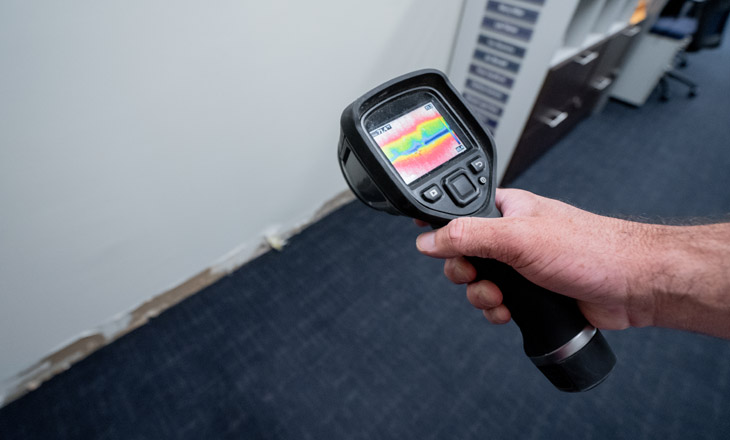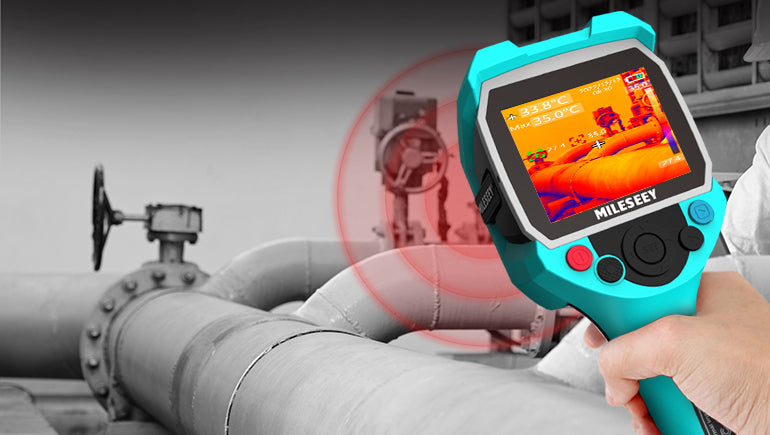Leading Water Leak Detection Techniques to Shield Your Property from Water Damages
Leading Water Leak Detection Techniques to Shield Your Property from Water Damages
Blog Article
Cutting-edge Solutions for Very Early Detection of Water Leaks in Buildings and Framework
From innovative leak discovery innovations to the implementation of IoT sensing units for real-time tracking, the landscape of leakage prevention is evolving swiftly. Automated water circulation evaluation systems are improving how leakages are determined and addressed, leading the method for a positive strategy to water leak detection.
Advanced Leak Discovery Technologies
Advanced leak discovery innovations, furnished with sophisticated sensors and algorithms, play a vital duty in promptly identifying and pinpointing water leaks in numerous setups. These modern technologies employ a combination of acoustic, thermal, and electromagnetic picking up methods to discover leaks precisely. Acoustic sensors identify the sound of leaving water, permitting for specific localization of the leak source. Thermal imaging finds temperature level modifications created by water leak, providing one more reliable approach for leak recognition. Electromagnetic sensing units can identify adjustments in electromagnetic areas triggered by water, offering yet another layer of leakage discovery capacity.

IoT Sensors for Real-Time Surveillance
In the world of modern water leakage discovery, the assimilation of IoT sensors for real-time tracking stands for a pivotal improvement in improving aggressive leak discovery abilities. These sensing units provide continual tracking of water systems, offering real-time data on water flow prices, stress variants, and temperature level modifications. By leveraging IoT modern technology, these sensors can discover even the tiniest anomalies in water usage patterns, making it possible for very early identification of prospective leakages prior to they intensify right into significant concerns.
IoT sensing units send data to a central system, where sophisticated algorithms examine the information and create informs or notices when abnormalities are discovered. This real-time monitoring ability permits homeowner or facility supervisors to promptly resolve leaks, decreasing water damages, minimizing repair service prices, and preserving water resources.
Additionally, IoT sensors can be integrated with structure administration systems, permitting automatic responses to found leaks, such as closing off water valves or triggering pumps to alleviate the effect of leakages. On the whole, the execution of IoT sensing units for real-time monitoring substantially boosts the effectiveness and effectiveness of water leakage detection in structures and framework.
Artificial Intelligence Algorithms for Leakage Forecast

One secret benefit of using artificial intelligence for leakage forecast is its ability to continually find out and improve its accuracy over time. As even more information is accumulated and fed into the formula, it can refine its forecasts and try this out adjust to altering conditions, eventually enhancing the reliability of leak detection systems.
In addition, artificial intelligence formulas can help in identifying refined indicators of leakages that might go undetected by conventional surveillance approaches. water leak detection. By analyzing intricate data embed in real-time, these formulas can supply early cautions and notifies, permitting prompt intervention and precautionary upkeep to reduce possible water damages and connected prices
Utilizing Thermal Imaging for Leak Discovery
Thermal imaging technology provides a promising method for identifying water leaks in different systems and facilities. By utilizing infrared radiation and temperature level differences, thermal imaging cams can recognize hidden leaks that are not conveniently visible to the nude eye.
One of the crucial advantages of thermal imaging for leak detection is its non-intrusive hop over to these guys nature. Unlike traditional approaches that may need damaging right into wall surfaces or floorings to situate leaks, thermal imaging permits non-destructive testing. This not only saves time and lowers prices yet likewise reduces disturbance to the structure or infrastructure being assessed. Additionally, thermal imaging can rapidly check large areas, supplying an extensive overview of prospective leak resources in a timely way. In general, using thermal imaging modern technology enhances the performance and accuracy of water leakage discovery, making it a valuable tool for maintaining the stability of buildings and infrastructures.
Automated Water Flow Evaluation Equipments
Exactly how can automated water flow evaluation systems reinvent the detection and monitoring of leaks in different systems and frameworks? Automated water flow analysis systems supply a positive strategy to leakage discovery by constantly keeping an eye on water circulation prices and patterns. By establishing standard information, these systems can promptly determine variances that might indicate a leakage, enabling prompt intervention to stop substantial damages.
These systems utilize advanced formulas to examine real-time information and give prompt alerts when anomalies are discovered, enabling for quick activity to be taken. In addition, automated water flow analysis systems can be integrated with building management systems or IoT systems, enhancing overall effectiveness and making it possible for remote monitoring abilities.
Moreover, the data accumulated by these systems can be utilized for anticipating maintenance functions, helping to recognize potential weak factors in the infrastructure useful source prior to leakages happen. In general, the implementation of automatic water flow analysis systems can significantly boost leak detection and management techniques, inevitably causing cost financial savings, reduced water waste, and enhanced sustainability in buildings and framework.

Verdict
To conclude, the integration of sophisticated leak detection innovations, IoT sensing units, artificial intelligence algorithms, thermal imaging, and automatic water flow evaluation systems supplies ingenious solutions for early discovery of water leakages in structures and facilities. These innovations enable real-time monitoring, prediction of leaks, and effective detection techniques to protect against water damage and wastage. Executing these solutions can assist in maintaining the honesty and sustainability of water supply in different settings.
Report this page